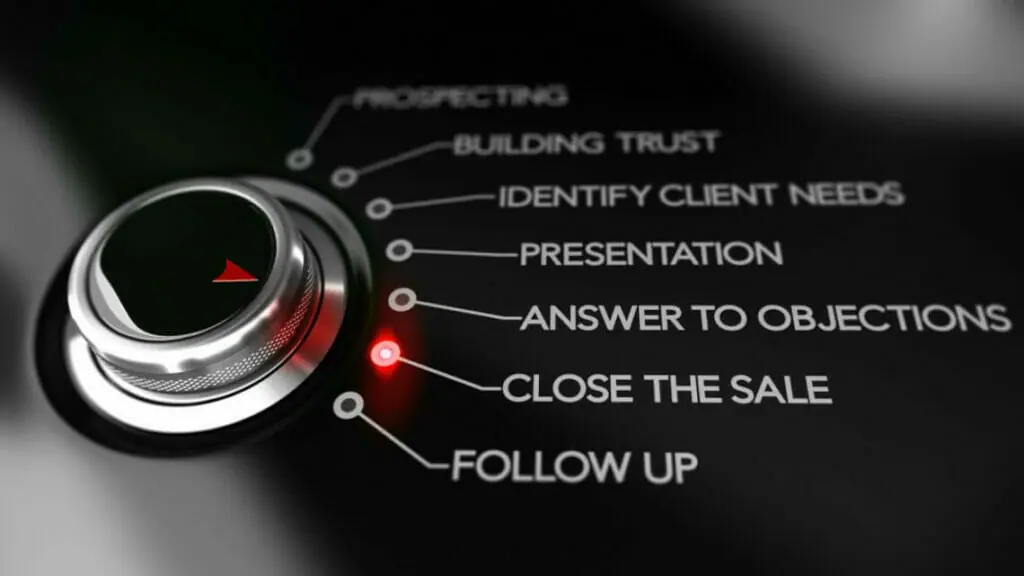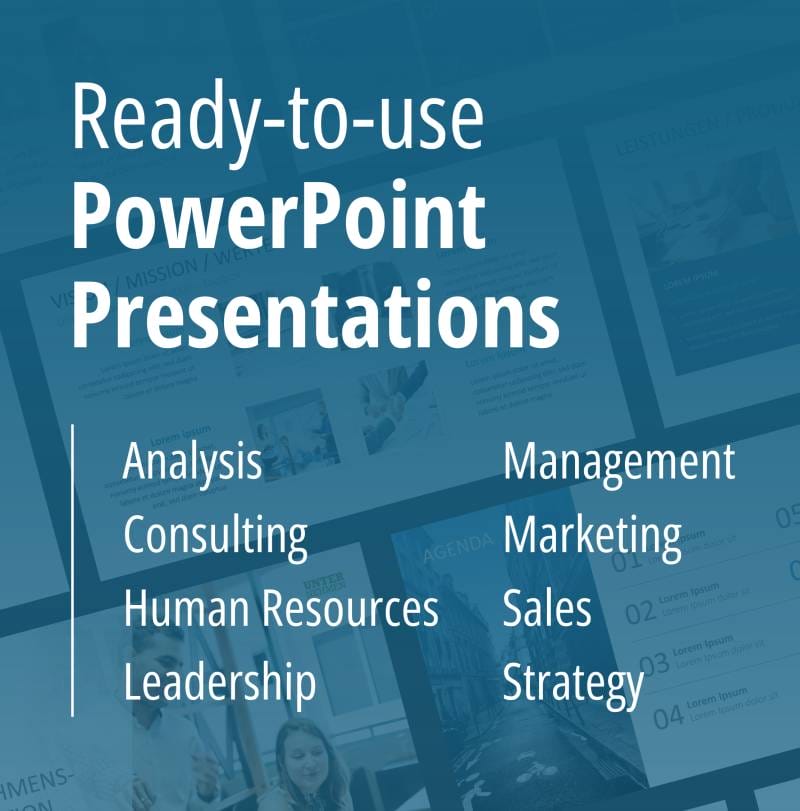
3 convincing sales arguments: Closing sales through needs-orientated arguments
You have developed your own product and you have done it so well, that you want to make lived of potential customers easier. But what does selling products actually depend on and how can you sell your ideas and products successfully?
The management consultants of the English Huthwaite agency have gained some interesting insights on meaningful sales arguments. In this article, we will present these insights and three different types of needs-orientated arguments for sales.
The conclusion the Huthwaite agency came to, may not sound too surprising, but we cannot stress enough that:
The more time we invest in researching and formulating strong sales arguments, the bigger the revenues in the end.
The management consultants of Huthwaite have, as many of you may have guessed, proven that the higher the percentage of selling points, the better the sale ends up working out.
Further, the agency has divided sales arguments into three different categories. The conducted study showed that all three types of argumentations are effective in different situations.

#1: Logical, rational sales arguments
The first type of arguments is based on logical thinking and corresponds to the interests of the buyers. For this reason, these arguments work best when the clientele is well informed about the product and knows what they want. In this case, you will be more successful as a salesperson if you can convince with logical arguments and facts.
You should be able to present the prospect with facts and data about why your product is the best.
#2: Emotional arguments
These types of arguments have the goal of arousing positive emotions and reducing fear amongst buyers. These arguments work best when the potential buyer does not have a specific preference and does not yet know what exactly they want.
This is exactly when you can appeal to the emotions of your potential clientele. Make your audience feel something. This works, for example, with the help of storytelling and telling a story about how your product has already helped other people.
For more tips on “Storytelling” and “Emotions in presentations”, feel free to check out our blog post on the topic.
#3: Moral arguments
The third kind of arguments is about making the buyer aware that the purchase is a moral, right decision. These arguments work best when the buyer feels guilty for spending money and is not sure if the purchase is necessary. In this case, you can use moral arguments to convince your audience that the purchase is justified.
Personal arguments
In general, sales arguments are most successful when they are tailored to individual buyers. What works as an argument for one person may not work for another. For this reason, it is important to make sure that your arguments fit your target audience.
The first step for this is to find out what motivates the buyer to purchase something. What do they want to achieve with your product? Once you know this, it is easier to tailor your sales arguments to the potential buyers’ goals.
Example: Needs-orientated arguments for car sales
The reason why someone might want to buy a car, could be that they need to get from A to B for a job. In this case it makes sense to base the sale arguments on the safety aspects and fuel efficiency of the vehicle.
On the other hand, someone might want to buy a car to impress friends or colleagues. In this case you can base your sales arguments on the design and luxurious elements of the car.
Tailoring your sales pitch to the individual buyers, means that you are more likely to successfully close the sales deal.
Important Key Points
No matter how high or low your clienteles’ motivation may be, there are a few key points that are important for every sales pitch.
Create effective sales pitches with the following points:
#1: As buyers are more likely to react to confident speakers, it is important that you start with a strong viewpoint. Start your sales pitch with conviction and show that you believe in your own product.
#2: Make sure, that your audience get enough information about the product.
#3: Personalize your story and show how your product has previously helped other people by using storytelling. Finally, close with a bang and reiterate the most important information about the product. Then say, why your audience should buy the product.
#4: Remember to think from a buyer’s perspective when preparing your sales pitch! Make sure, that the needs-oriented arguments reach your audience and that they understand how they can profit from your product. Thus, you can achieve your goals more easily and gain new clientele in no time!
Extra tip: Close sales through storytelling

Don’t just present something to your clientele to sell, tell them a story. A story, that they will remember and that motivates your audience to buy your product or invest in your idea.
As a sales representative, you may always be looking for new and interesting ways to reach your target audience. And as it turns out, one of the most effective ways is also the essiest: Storytelling.
Your clientele are busy people who don’t have time to listen to long and boring sales pitches. They want to be involved and they want to know that you can solve their problem.
Most sales pitches are boring
The problem is that most sales pitches are boring and focus on the features of the product or service rather than the benefits. And they don’t manage to create a connection with the audience. Don’t just focus on the features, but instead focus on the benefits and on how your product or service can help your audience reach their goals.
To find out more about needs-oriented arguments, have a look at our article on ‘Presenting Customer Benefits’.
When was the last time you listened to someone selling their product and thought: ‘This is the best sales pitch ever!’? Probably never. But you probably have been captivated by a good story before.
The best sales arguments tell a story
Don’t try to sell your product or service to your audience right away. Instead, focus on connecting with your listeners and building trust.
If you want to stand out and create an effective sales pitch, tell a story. Start with focusing on your audiences’ needs. What are their problems? What are their goals? As soon as you have gained your audience’s trust, you can start talking about your product or service.
A story can speak to us on an emotional level, and that’s what you need to do with your clientele. And when people feel emotionally connected to your brand, they’re much more likely to buy from you.
So how can you tell a story that actually sells? Here are three steps:
#1: Start with your clientele in mind: Which problem do they want to solve? Your story should focus on the clientele, not on you or your product.
#2: Make your story understandable: Use examples and analogies that your audience can understand and relate to on a personal level.
#3: Let your story come alive: The best sales stories are vivid and detailed, almost like a movie scene playing out in the listener’s mind. Use strong language and active verbs to really bring your story to life.
By following these steps, you can write a sales story that captivates your audience and leads to more business.
Storytelling increases your sales

With the right story, your sales pitch can be fun! For example, take this story of how we helped one of our clients increase their sales by 30%:
The company struggled selling their product: They tried everything, but nothing seemed to work. They then came to us, and we sat down together and got to know more about their product, their selling process, their target market, and their audiences’ problems.
We the created a sales deck that focused on the unique benefits of the product and on how the product could solve the target markets’ problems. The results were surprising. The company did not only manage to increase their sales by 30% but also managed to gain a loyal customer base that were impressed by the product.
If you are struggling to sell your product or services, tell us your story. We will help you create a sales pitch that will appeal to your audience and get them excited about what you have to offer. ► To the agency
Conclusion: Sell your products through strong needs-orientated arguments!
By using personalized arguments and appealing to your audience’s emotions, you can sell your product in no time. Follow our tips for this and see for yourself how you can close more deals than ever!
Do you have questions about sales pitches or PowerPoint in general? Do not hesitate and contact us at [email protected]. We are always happy to help!
Further articles, that could also interest you:




